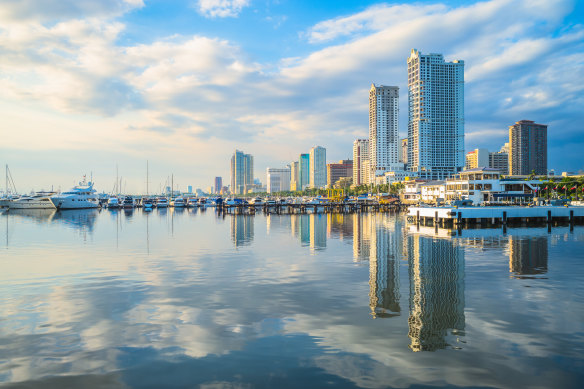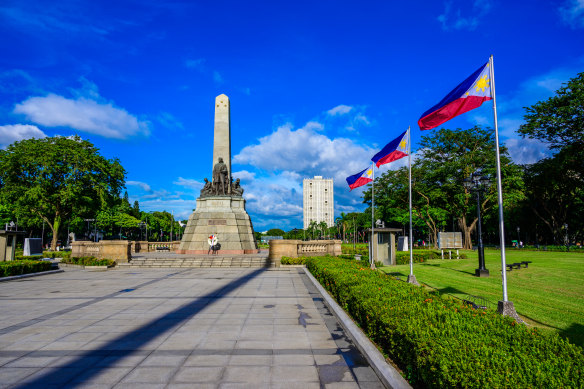Port guide: Manila, Philippines
Manila is chaotic, crowded and traffic-choked, but beneath its daunting surface you’ll find plenty of reasons to get out and explore.
Who goes there
Few cruises start or end in Manila, but an increasing number of cruise lines visit on Asian itineraries, among them Carnival, Cunard, Holland America, Norwegian, Oceania, Princess, Regent Seven Seas and Silversea. Expedition lines such as Coral Expeditions also occasionally call in on itineraries that explore the Philippine archipelago.

Manila and its port.Credit: iStock
Sail on in
Manila ought not to be a great arrival, since the landscape is flat and urban scene industrial, yet somehow it always is. Maybe it’s the languid tropical breezes, the silvery glimmer of sun on the water, the flotilla of cargo ships, and the clang and energy of the approaching megacity. The sheer size of Manila Bay is also impressive.
Berth rites
Cruise ships dock in either South Harbour or North Harbour amid a bustle of ferries and cargo ships. Either way, you won’t find many facilities and have no reason to linger, so clamber straight into a taxi or excursion bus. The greatest pleasure is seeing Filipino crew reunited with families they haven’t seen for six months or more. The crying on sail-away is a reminder of the sacrifices crew make to better their lives.
Going ashore
First visit? Concentrate in Intramuros a short distance from the cruise terminal, and the most relaxed part of the city. Spanish-era plazas and buildings are enclosed within its dilapidated defensive walls and guarded by Fort Santiago. Pop into Manila Cathedral, then head to the city’s oldest church San Augustin, disconcertingly guarded by Chinese lions, and flanked by cloisters. Just opposite, Casa Manila is a reconstructed Spanish-era mansion chock-full of antiques.
Don’t miss
Across the Pasig River from Intramuros, Binondo was set aside for Chinese immigrants in the late-16th century, making it probably the world’s oldest Chinatown. Wander past teahouses, jewellery stores and bakeries selling yam buns and mooncakes. Buddhist temples ooze incense smoke. Innumerable restaurants line Carvajal Street, the epicentre of bargain dining. The vast and wonderfully ornate Manila Chinese Cemetery further north is often visited on shore excursions.
Get active

Enjoy a scenic run at Rizal Park.Credit: Getty Images/iStockphoto
Get the legs going with Bambike, a cycle tour company that takes you around the colonial town on intriguing bamboo bicycles. Club Intramuros Golf Course, which occupies what was once Intramuros’ moat, is an eccentric, 18-hole, par-66 course. Otherwise, head to Rizal Park for a jog. In the early morning, locals here practise tai chi, ballroom dancing and traditional stick-fighting known as arnis de mano. At any time, the park is a great place to mingle with locals enjoying their downtime.
Best bites
Filipino food is peppered with Spanish, American and Chinese influences and is unusual in Asia for its focus on stews and roasts. Arroz caldo is a staple of street stalls and fast-food outlets and (in much fancier form) restaurants. The glutinous rice porridge is cooked with chicken and ginger and sprinkled with toasted garlic, green onion and pieces of hard-boiled egg. Also popular is heat-combatting dessert halo-halo, a combination of beans, evaporated milk, ice cream and jellied fruits served over crushed ice.
Further afield
Manila is unusual for having several downtowns. Makati is the business centre and the place to head for upmarket shopping. Greenbelt alone consists of five malls interconnected in landscaped gardens; you’ll find numerous local design boutiques. While in Makati, visit the excellent Ayala Museum for Filipino history and culture. Fifty kilometres south of the city, Taal Lake sits in a gigantic volcanic crater. You can walk the crater rim, horse ride or head out on a lake boat to admire the spectacular natural wonder.
Sign up for the Traveller Deals newsletter
Get exclusive travel deals delivered straight to your inbox. Sign up now.